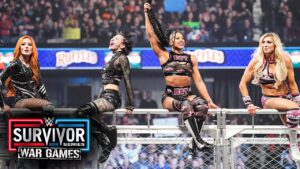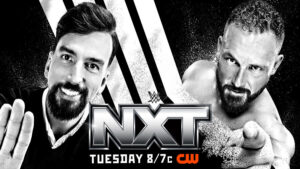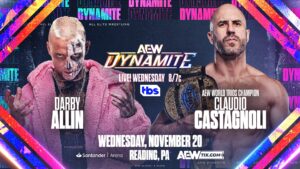The Pioneers is a new on-going series looking at some of the earliest pioneers of professional wrestling as we know it, from the wrestlers to promoters to trainers who helped shape professional wrestling around the world. Today we look at Luther Lindsay.

The Pioneers: Luther Lindsay
Luther Lindsay was a multi-sport collegiate athlete prior to his turn to professional wrestling. He played college football for Norfolk State and Hampton Institute as well as excelling as a collegiate wrestler. But this was during the 1940s, when racial segregation was still highly rampant and enforced. He was never allowed to compete against white athletes, in either collegiate football or wrestling. He turned to professional football, but it was only in Canada that he could find work, playing two years for the Canadian Football League (CFL). But the racial segregation of US pro football that initially appeared to be a setback for Luther Lindsay’s future, actually turned out to be a blessing in disguise. While playing football in Canada, Lindsay struck up a friendship with Stu Hart, who took Lindsay under his wing and trained him to be a professional wrestler. It would become a lifelong friendship built on respect – according to Stu’s granddaughter, WWE Superstar Natalya, Lindsay was the only man to ever make Stu tap.
My grandfather kept a photo of Luther Lindsay in his wallet. He was the only person to make Stu tap. Happy Bday, Stu. pic.twitter.com/FlawVNmomf
— Nattie (@NatbyNature) May 3, 2014
Trained by one of the world’s greatest submission specialists, Lindsay left pro football and headed back to the US to work the NWA territories in 1951. A strapping strong man with a keen eye for the technical aspects of the game, he became an instant star. He became the first African-American to face a white wrestler in the South, when he faced Ron Wright in Tennessee, an event that brought in the National Guard in case of rioting. But the crowd was overwhelmingly on Lindsay’s side, opening the gates for other African-American wrestlers to find employment in the Southern territories. Despite the historical significance of the match in hindsight, racial segregation of wrestlers was still predominant even as late as the 1960s.

Lindsay relocated to the Northwest, working the Pacific Northwest territory of the NWA, as well as Stu Hart’s Stampede Wrestling in Calgary. In 1953, Lindsay became the first African-American to ever be allowed to challenge for the NWA World Heavyweight title, when he faced off against Lou Thesz. Thesz immediately became a fan and friend of Lindsay and in his autobiography, Hooker: An Authentic Wrestler’s Adventures Inside the Bizarre World of Professional Wrestling, he stated that “(w)ithout question, the best black wrestler ever. Luther had a fantastic body and limitless energy to compliment his skill. Like many other industries, wrestling was not open to African-American wrestlers during his career, so it was an amazing accomplishment for Luther to even learn his craft. His place in history is not because he was black; it is in spite of the fact he was black.”

In 1955, Lindsay won the inaugural NWA Pacific Northwest Heavyweight Championship, defeating Roger Mackay in a tournament final, to become the first African-American wrestler to win a singles title in the NWA’s seven year history to that point (his first title had come a year earlier, when he won the NWA Hawaii Tag Team titles with Bobby Burns). Earlier in his career, Lindsay was billed as the World Negro Heavyweight Champion in territories, but while the accolade seemed great, it was more of a novelty championship that was just defended between a small core of travelling African-American wrestlers. Winning the titles that were previously relegated to whites only carried a far greater historical significance to the Lindsay and the industry itself.

By the late 60s, Lindsay was one of the biggest African-American stars in the business, although his star was increasingly overshadowed by emerging new stars like Bobo Brazil. But Stu Hart continued to push Lindsay heavily in Canada, where he won the NWA Canadian Heavyweight Championship in 1967. He also worked with All-Japan and NWA Mid-Atlantic amongst others in his 20-year career, to which he literally gave his heart and soul to.
On February 21, 1972, during a match against Bobby Paul in Charlotte, North Carolina for Mid-Atlantic, Lindsay landed a flying belly flop on Paul for the pin and the victory. But following the ref’s three count, Lindsay didn’t get up. He was quickly taken back to the locker room by medical staff, where Lindsay was officially pronounced dead. He had had a massive heart attack while performing his finisher and died in the ring doing what he’d loved.
He was inducted into the Stampede Wrestling Hall of Fame before it closed in 1990, and last year he was inducted posthumously into both the WWE Hall of Fame and the Pro Wrestling Hall of Fame.
Check out more of our articles on The Pioneers of pro wrestling.
Stay tuned to the Last Word on Pro Wrestling for more on this and other stories from around the world of wrestling, as they develop. You can always count on LWOPW to be on top of the major news in the wrestling world, as well as to provide you with analysis, previews, videos, interviews, and editorials on the wrestling world.






